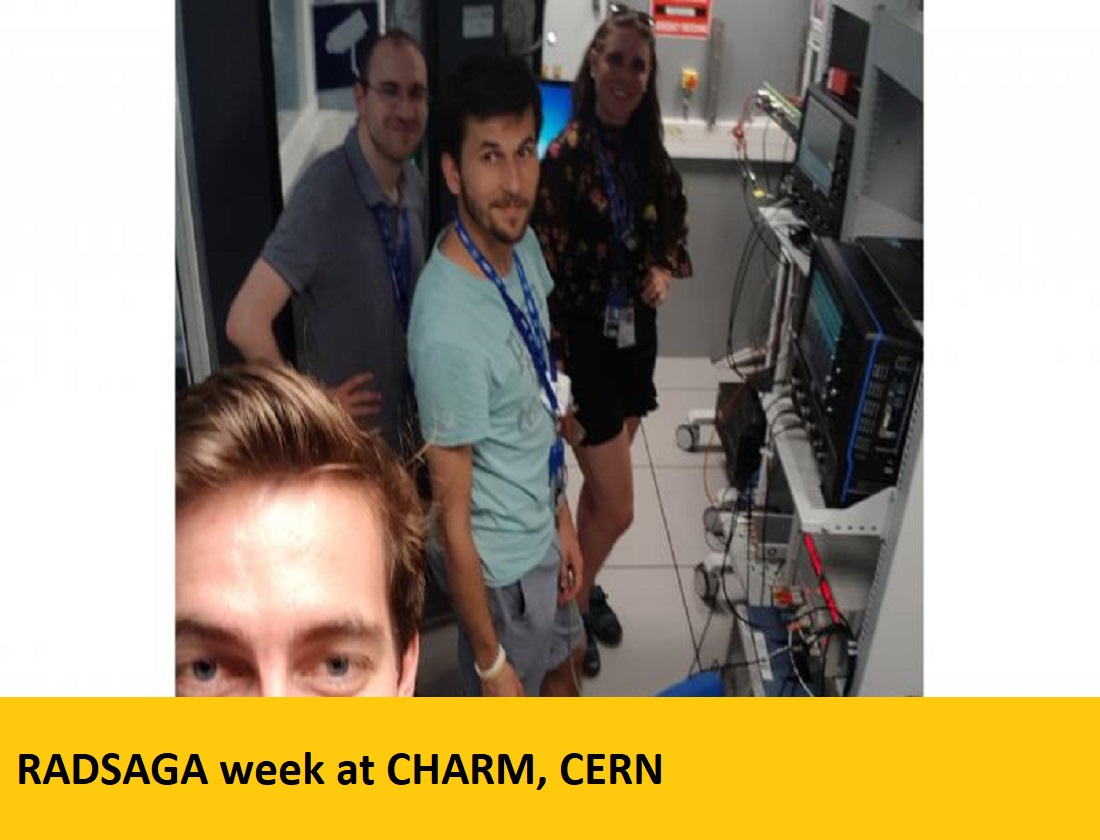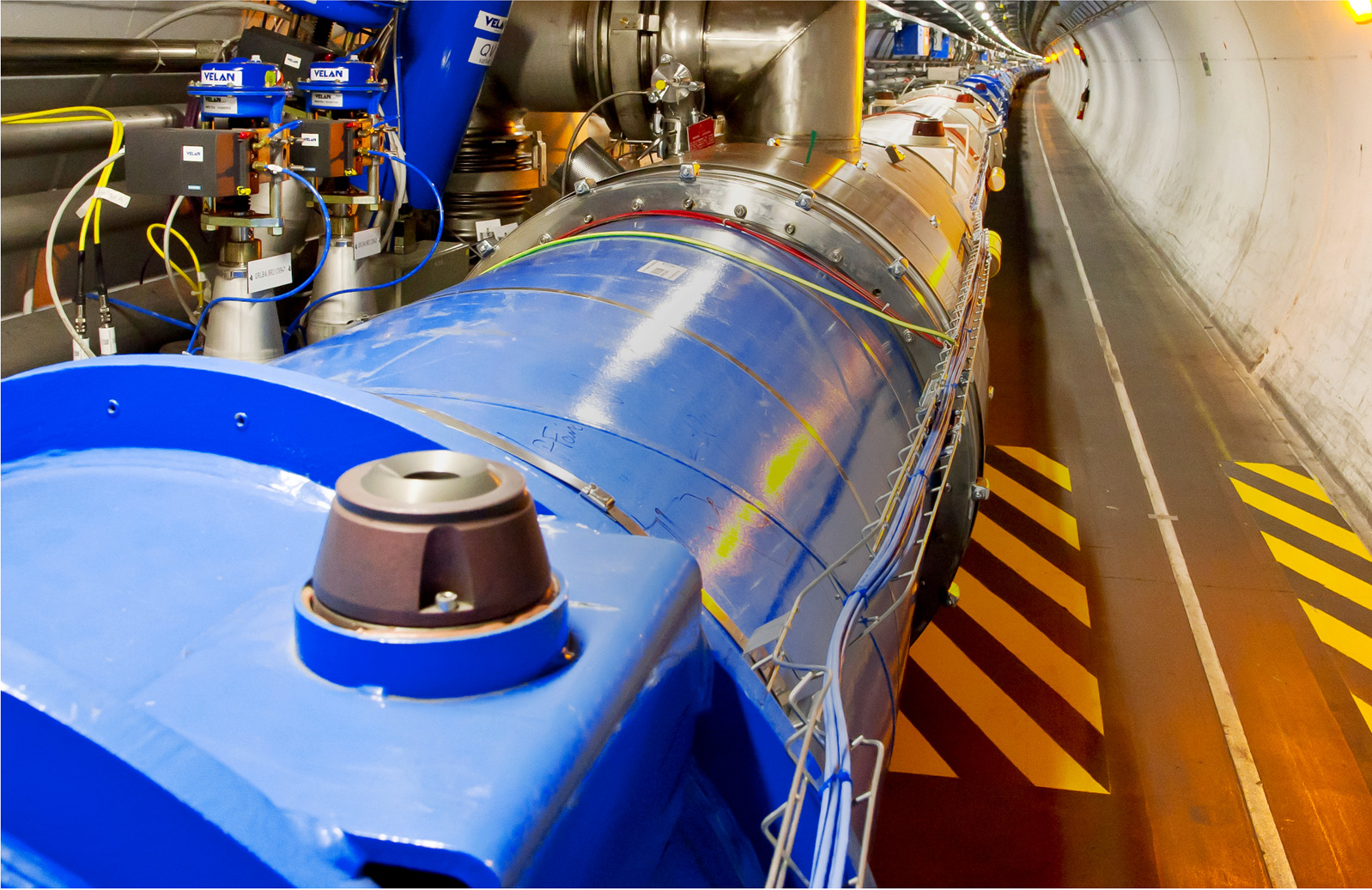RADSAGA week at CHARM, CERN
An entire irradiation week dedicated to RADSAGA was recently hosted at the CHARM (CERN Highly-AcceleRated Mixed field facility) at CERN, Geneva, Switzerland from July 18th to 25th. The test campaign featured the participation of 5 ESRs: Daniel Söderström (ESR2), Vanessa Wyrwoll (ESR4), Kimmo Niskanen (ESR7), Tomasz Rajkowski (ESR12) and Andrea Coronetti (ESR15).
The RADSAGA week at CHARM has been the first testing opportunity for RADSAGA ESRs this year and it will be followed by other contributions in Autumn, before the facility activity is suspended due to the Long Shutdown 2 in the CERN accelerators complex. CHARM (CERN Highly-AcceleRated Mixed field facility) represents a unique testing opportunity that has no real match anywhere in the world. The irradiation is provided by spills of protons extracted from the PS (Proton Synchrotron) with a momenutm of 24 GeV/c. After entering CHARM, protons collide on a target. This leads to nuclear reactions which unleash a huge amount of different particles (mainly hadrons) over a wide energy spectra. Fluxes and spectrum actually depend on the chosen testing position. This allows getting representative radiation fields relevant to any application of interest in RADSAGA: Space, Avionics, Ground and Accelerator.
The facility allows testing for a 7-day week, with the target in the beam for the first 5 days. However, some of the more sensible experiments were able to sense the beam even when the target had been removed. Daniel Söderström's optical fibers for dosimetry were one of these very sensitive equipment. The two fibers samples were releasing a signal whenever they sensed the presence of the beam. The two samples reacts to radiation by a phenomenon called Radioluminescence or by emitting Cerenkow radiation. The experimental position was set to be G0, quite far from the target and with quite low dose rate and high-energy hadrons flux. The setup had to be rehearsed several times. Finally, a very controversial decision was taken and the photomultipliers (used to amplify the signal coming from the fibers) were installed inside the irradiation room. To what grade measurements had been affected has yet to be determined.
Vanessa Wyrwoll tested the Pin Diode Canberra. For the occasion, the diode was installed in a very unusual position in front of the patch panel and behind a massive concrete wall. The aim was to reduce the flux down in order not to saturate the pre-amplifier. Despite all these efforts, the selected configuration (Copper target + no shielding) flux was still way above the saturation threshold and no measurements were possible.
Kimmo Niskanen was successful in testing three boards bearing Power Mosfets. Some of them were manufactured with GaN and tested at voltages as high as 600 V. The others were manufactured with SiC and tested at voltages as high as 900 V. The test position was again the grid in G0. As happened in GANIL, Kimmo could see events when biasing the Mosfets at 90% of the maximum rated voltage or higher.
Tomasz Rajkoswski's Point-of-Load Converter enjoyed a peaceful permanence (not many events seen) in the irradiation room, in spite of being positioned on the overhead conveyer deep in the closest proximity to the target among all the experiments. Tomasz will have the chance to test again during the Autumn irradiation runs and, this time, his equipment will be installed in an even harsher radiation environment. Hopefully, this will lead to more interesting results.
ESR15 - Andrea Coronetti
Here in the following some pictures from the test campaign.
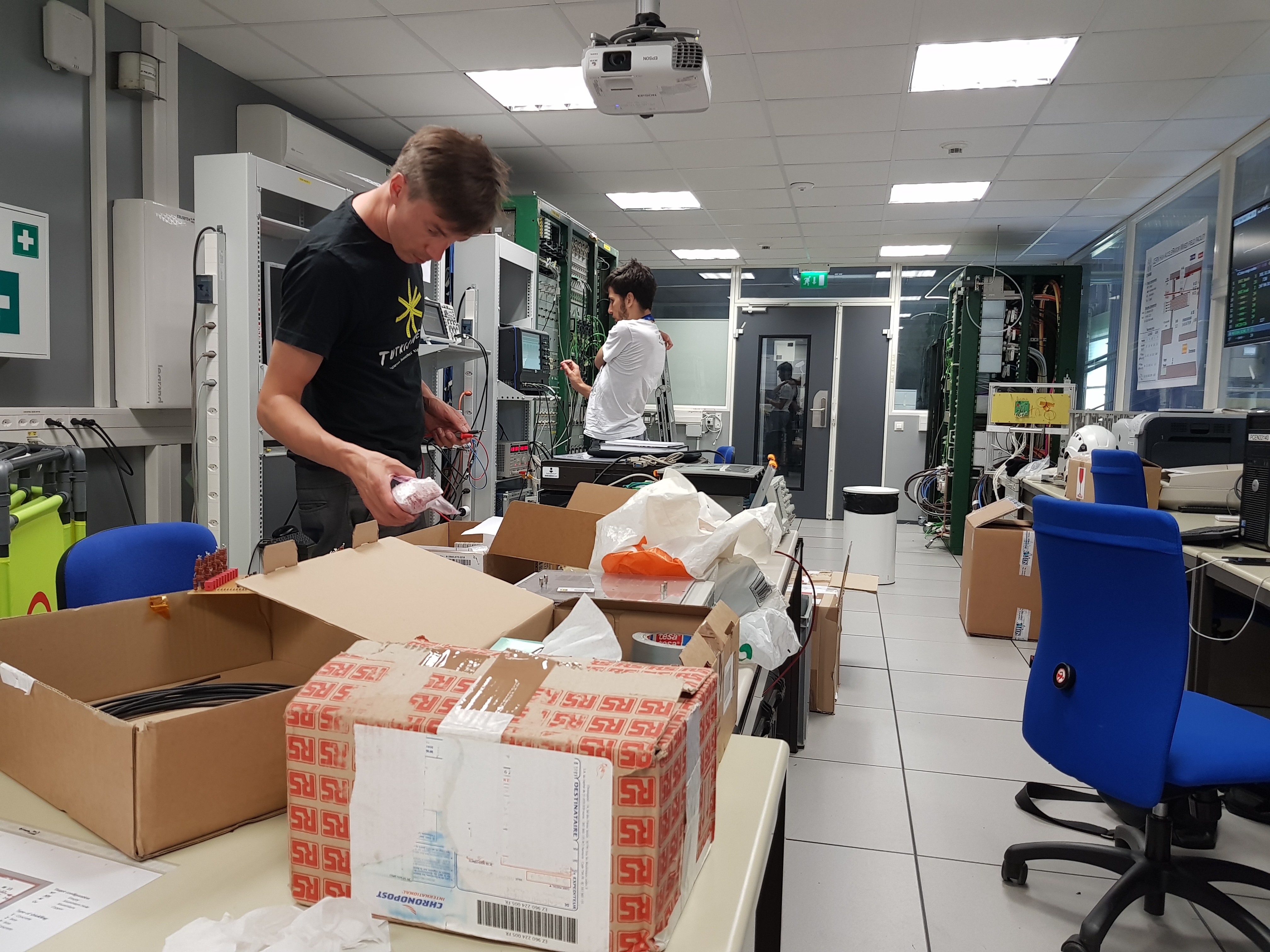
Kimmo and Tomasz unpacking equipment received from GANIL (Credit Daniel Soderstrom).

Tomasz setting up equipment during the dry-run (Credit Daniel Soderstrom).
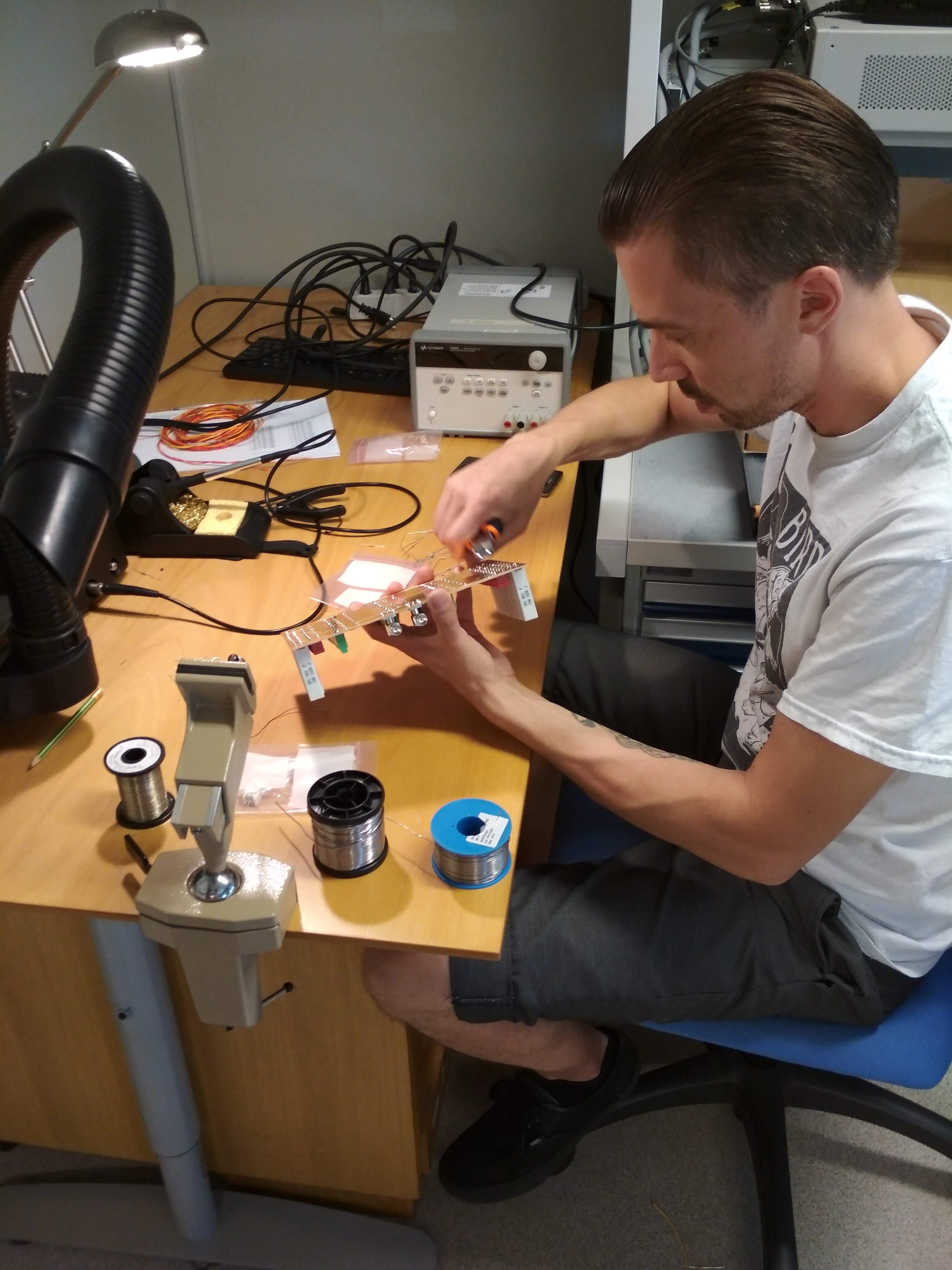
Kimmo manually preparing his boards for testing (Credit Tomasz Rajkowski).
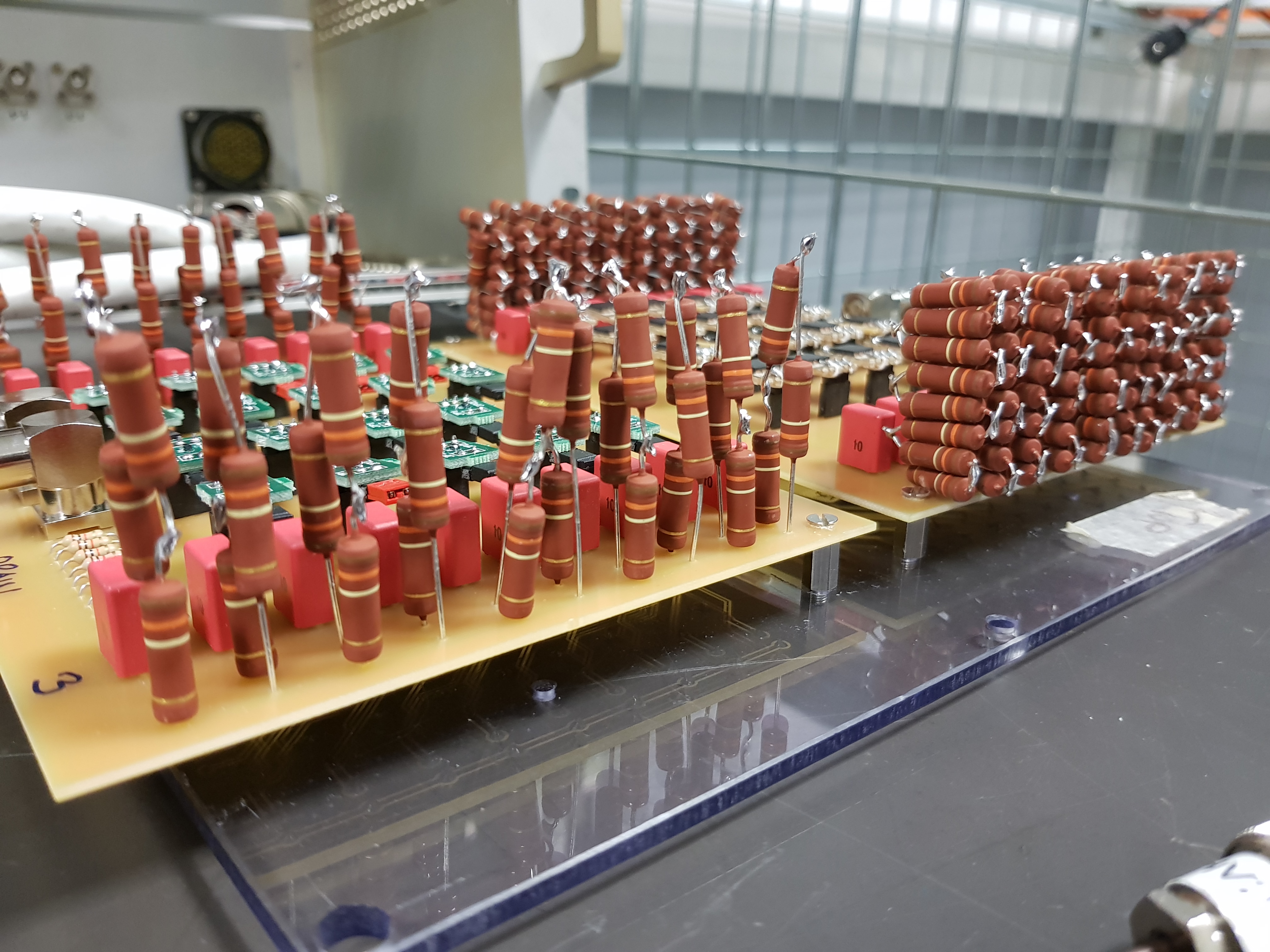
A snapshot of Kimmo's boards. One can count way more resistors than Mosfets (Credit Andrea Coronetti).
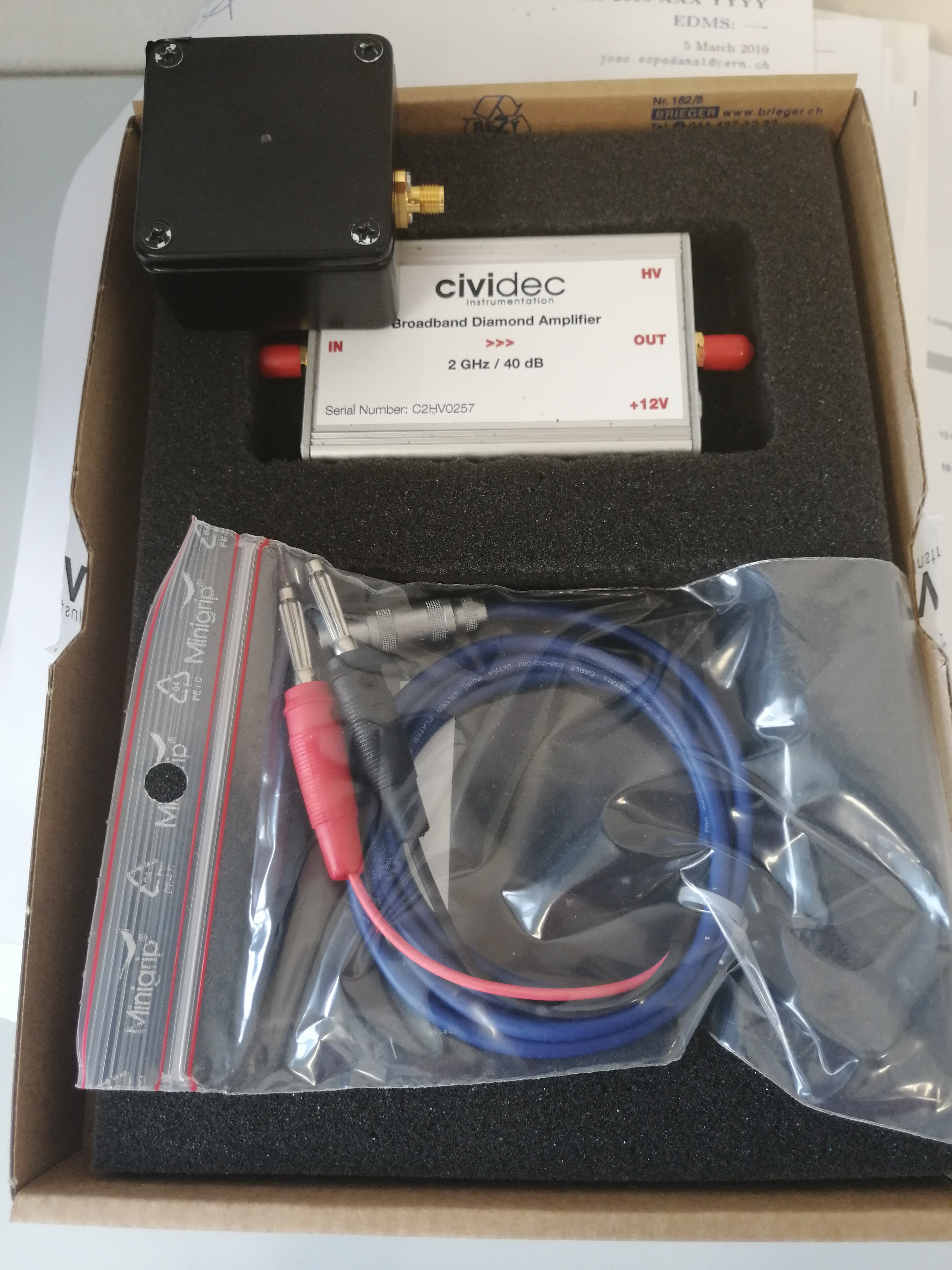
Vanessa's diode installed in the irradiation room (Credit Andrea Coronetti).
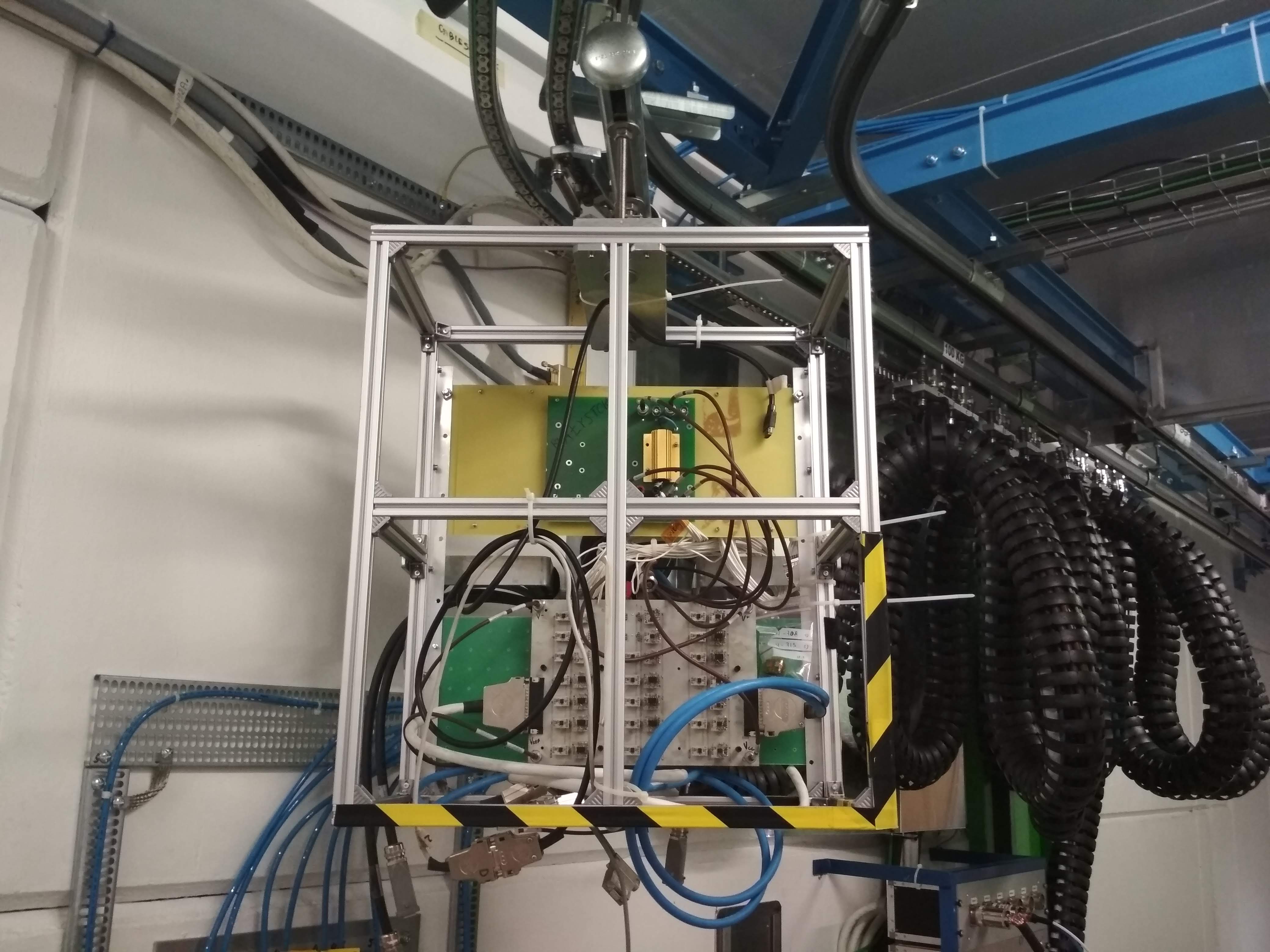

Tomasz's POL Converter installed on the overhead conveyer and ready to be moved in (Credit Tomasz Rajkowski).
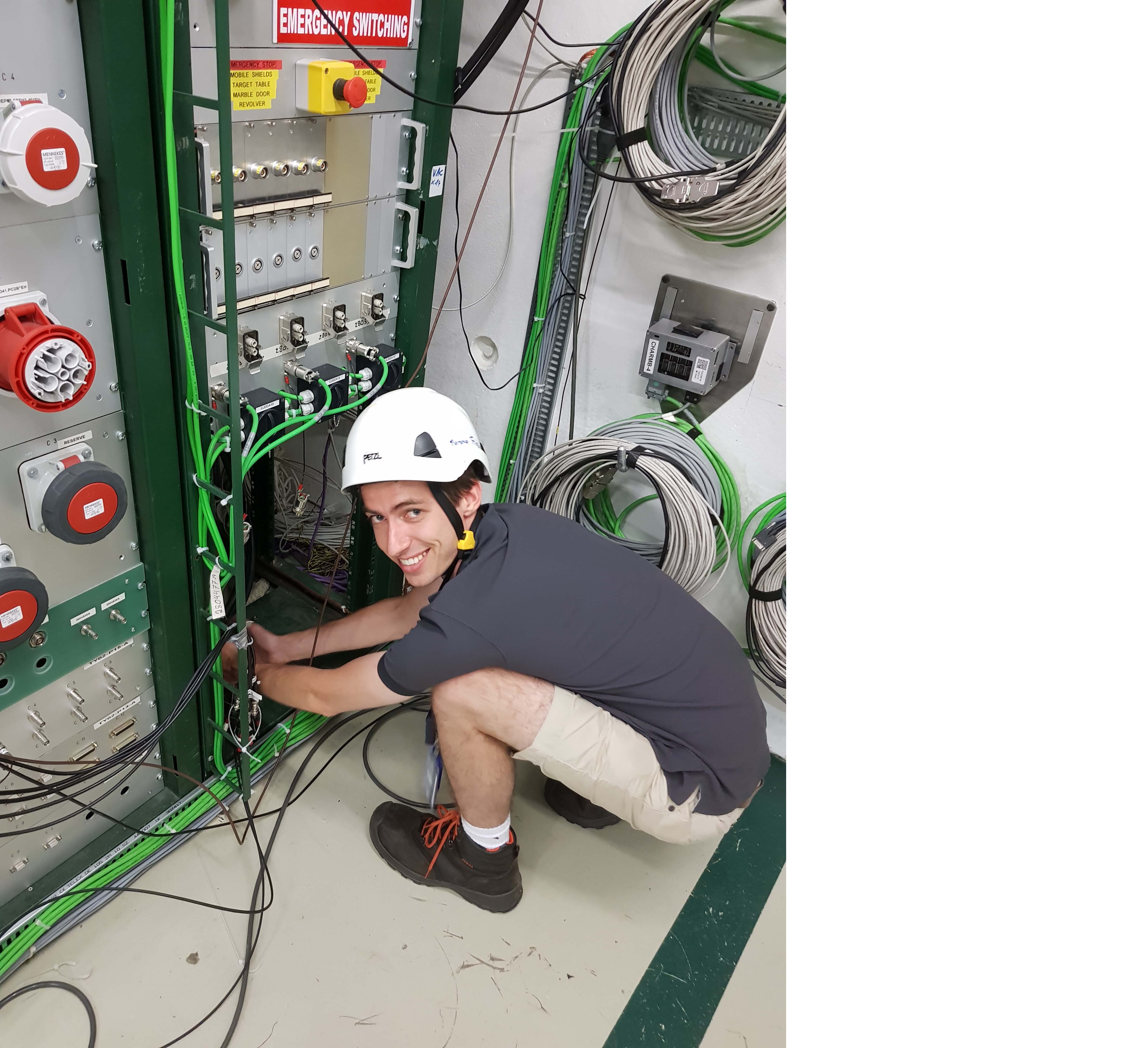

Daniel installing the photomultipliers underneath the patch panel (Credit Daniel Soderstrom).
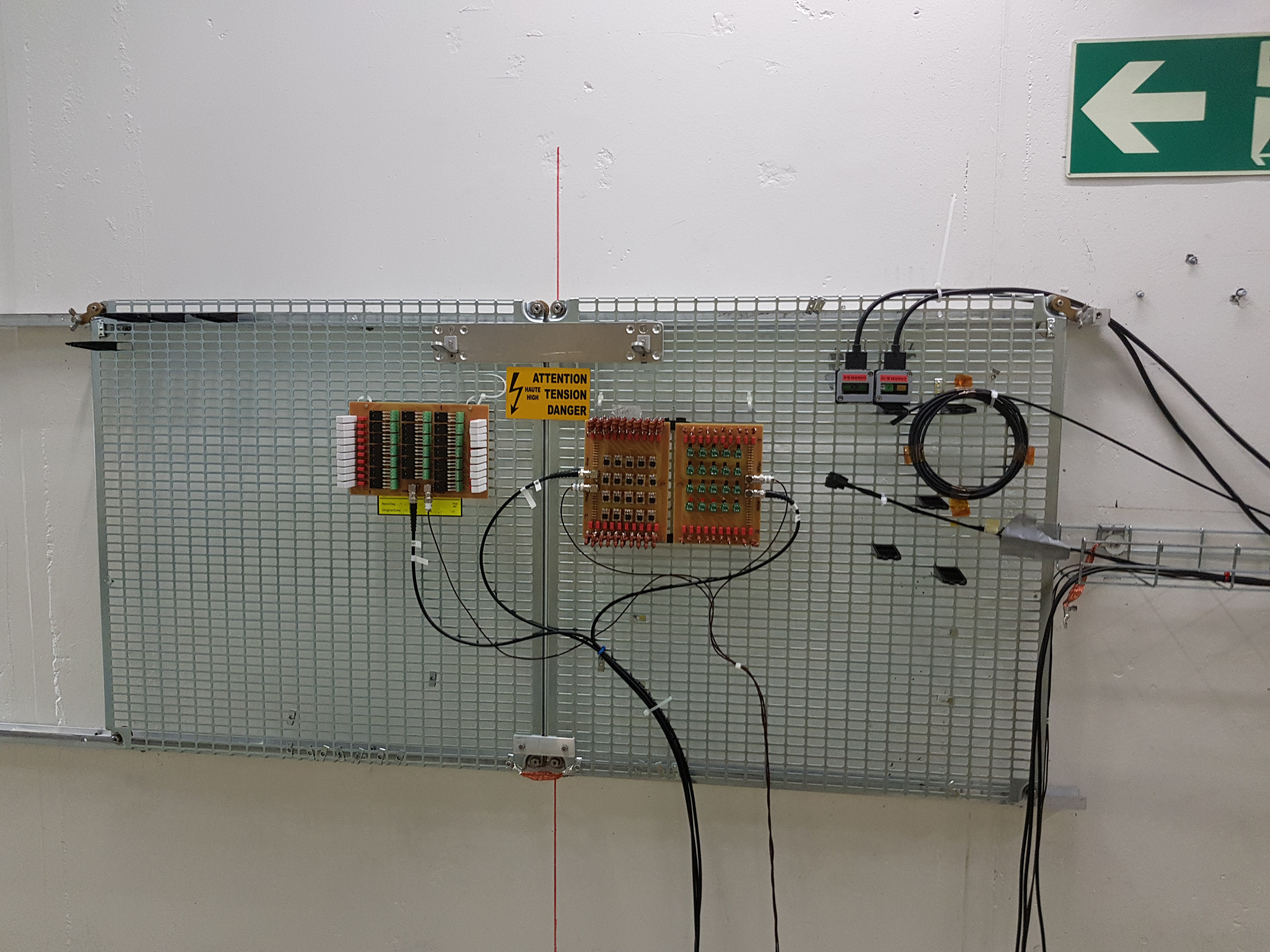

Kimmo's Power Mosfets and Daniel's optical fibers installed on the grid in G0 position (Credit Andrea Coronetti).
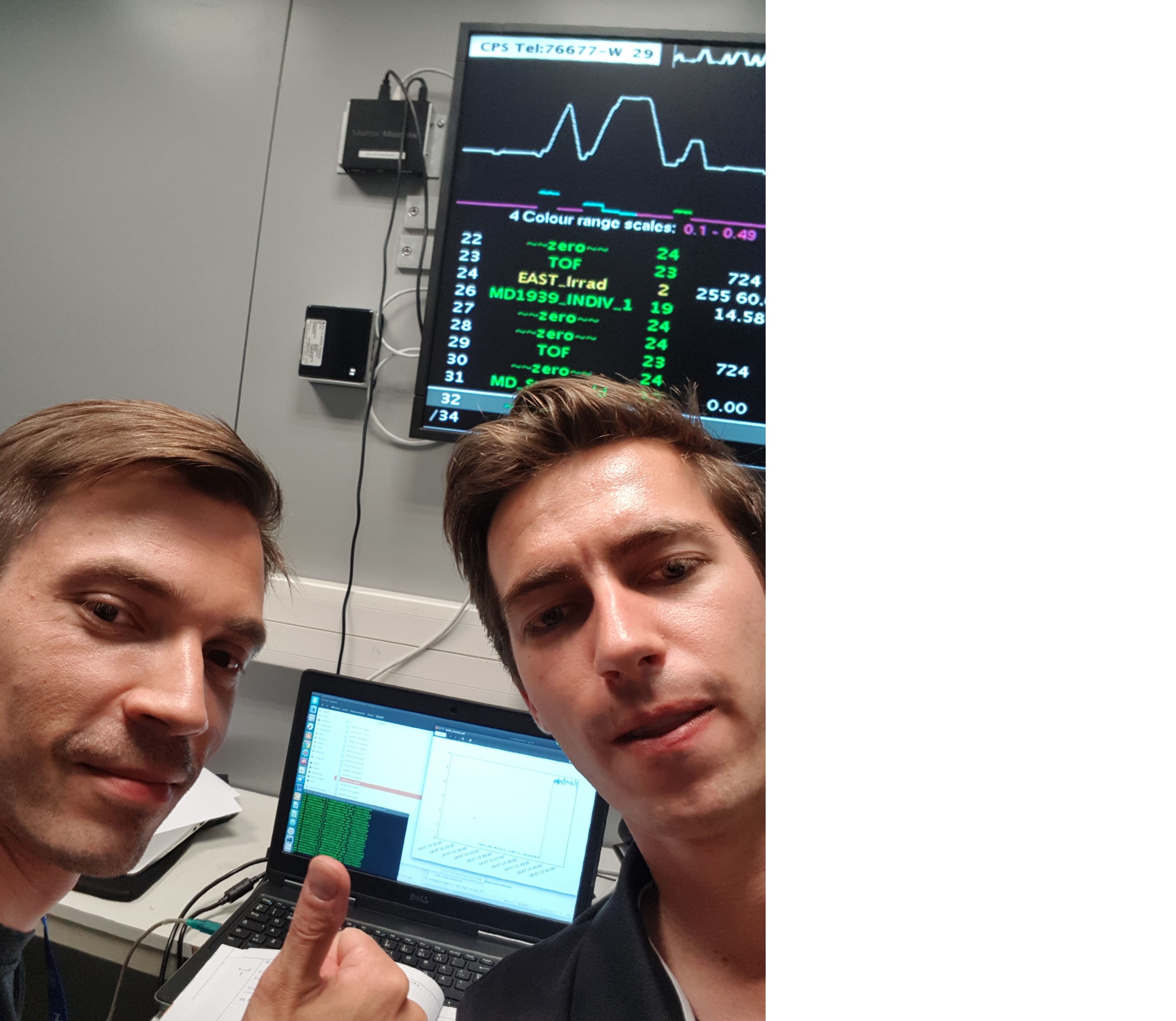
Kimmo and Daniel in the control room (Credit Daniel Soderstrom).
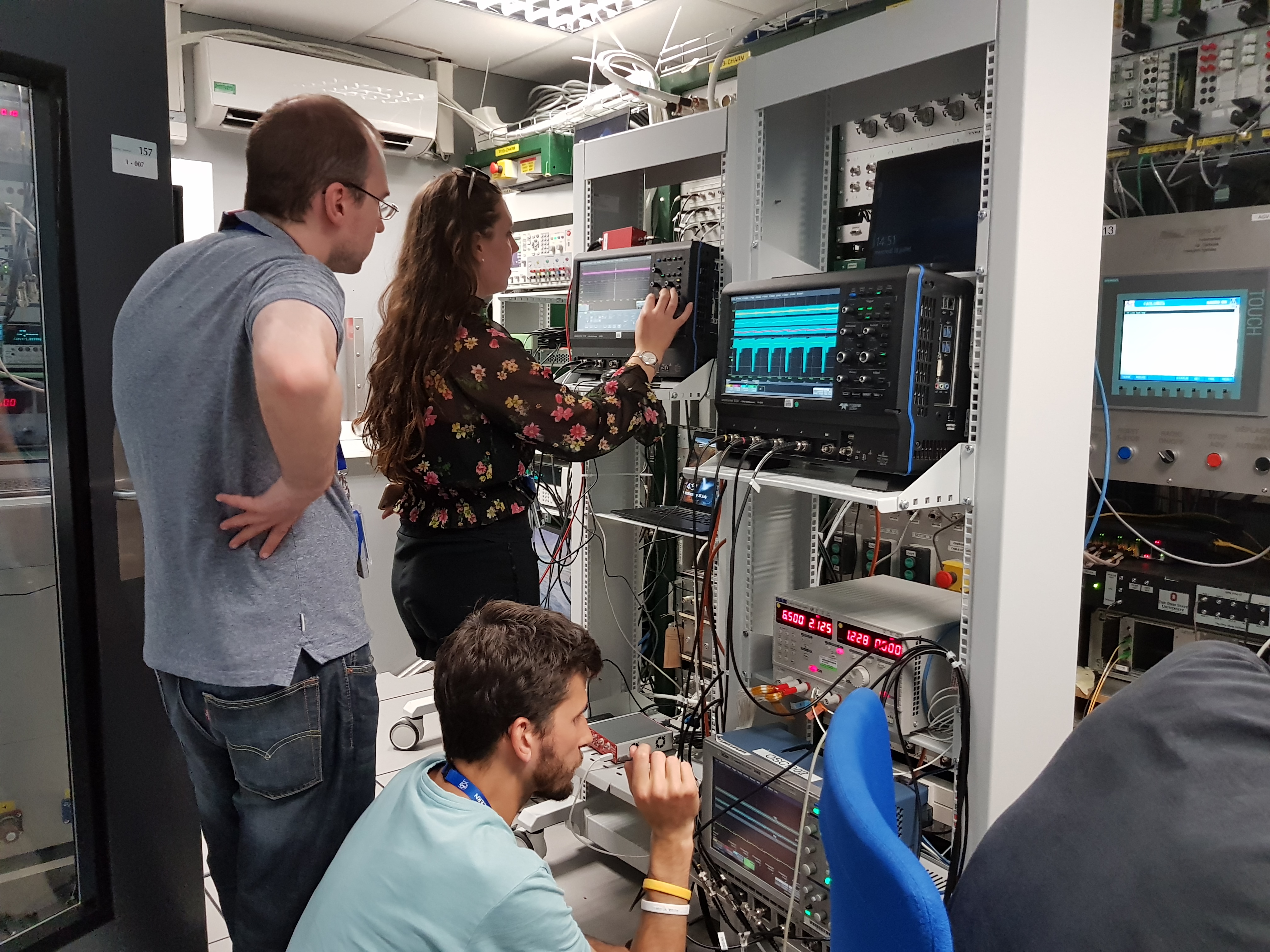
Overcrowded control room just after irradiation started (Credit Daniel Soderstrom).
